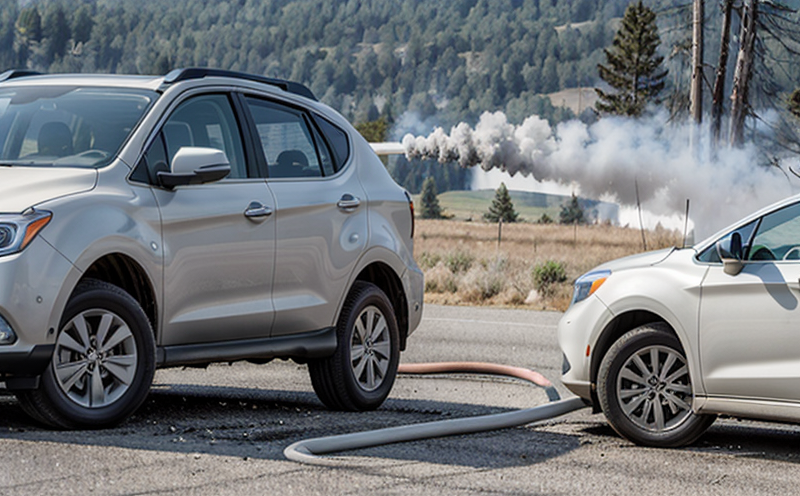Fire Smoke Emission Testing of Wooden Materials
Finding ways to ensure fire safety while maintaining product quality is a critical concern in many industries. In this context, fire smoke emission testing plays an essential role in evaluating the combustion behavior and toxic gas emissions from wooden materials under specified conditions.
The process involves subjecting samples of wood-based products to controlled heating or burning in a confined environment. This test not only helps manufacturers understand how their products will behave during a fire but also ensures compliance with international standards such as ISO 13984 and ASTM E907. The goal is to quantify the amount of smoke produced, as well as any toxic gases like carbon monoxide (CO), hydrogen cyanide (HCN), and formaldehyde.
The testing procedure typically begins with preparing the specimen according to prescribed dimensions. The sample is then placed inside a specially designed chamber where it undergoes controlled heating or combustion. During this process, sensors continuously monitor parameters including temperature, pressure, and gas concentrations. After reaching predetermined temperatures (often between 500°C and 800°C), the test continues until all combustible materials have been consumed.
The results provide valuable insights into various aspects of fire behavior, such as flame spread rate, smoke production index, and heat release rate. These metrics are crucial for determining whether a product meets stringent safety requirements set forth by regulatory bodies around the world.
Understanding these test parameters allows manufacturers to make informed decisions about material selection, formulation adjustments, or process modifications aimed at enhancing fire resistance without compromising performance. By conducting rigorous smoke emission tests early in the development stage, companies can identify potential issues and address them before they become costly problems during production or after-market use.
Moreover, this type of testing supports broader sustainability goals by encouraging innovations that minimize environmental impact while maintaining high safety standards. As society continues to prioritize eco-friendly practices, fire smoke emission tests offer a balanced approach between protecting human health and preserving natural resources.
Frequently Asked Questions
Benefits
Promotes safety by identifying potential hazards early in the development process.
Facilitates regulatory compliance with international standards like ISO 13984 and ASTM E907.
Supports sustainable practices through informed decision-making regarding material selection and formulation adjustments.
Enhances brand reputation by demonstrating a commitment to product safety and environmental responsibility.
International Acceptance and Recognition
The results of fire smoke emission tests are widely accepted across countries that adhere to relevant international standards. Laboratories accredited according to ISO/IEC 17025 are particularly trusted for providing accurate and reliable data.
Many organizations internationally recognize the importance of this testing, leading to increased demand from both domestic and export markets.
Eurolab Advantages
At Eurolab, we pride ourselves on offering comprehensive fire smoke emission testing services tailored specifically for wooden materials. Our state-of-the-art facilities adhere strictly to international standards, ensuring accurate and consistent results every time.
We employ highly qualified technicians who possess deep knowledge of the latest techniques and methodologies in fire safety analysis. With years of experience under their belts, they are well-equipped to guide clients through all aspects of the testing process—from initial consultation to final report generation.
In addition to robust technical expertise, Eurolab also offers exceptional customer service, ensuring that each client receives personalized attention throughout their testing journey. Our commitment to excellence extends beyond just providing quality data; it includes helping our customers navigate complex regulatory landscapes and implement effective strategies for improving product safety.





